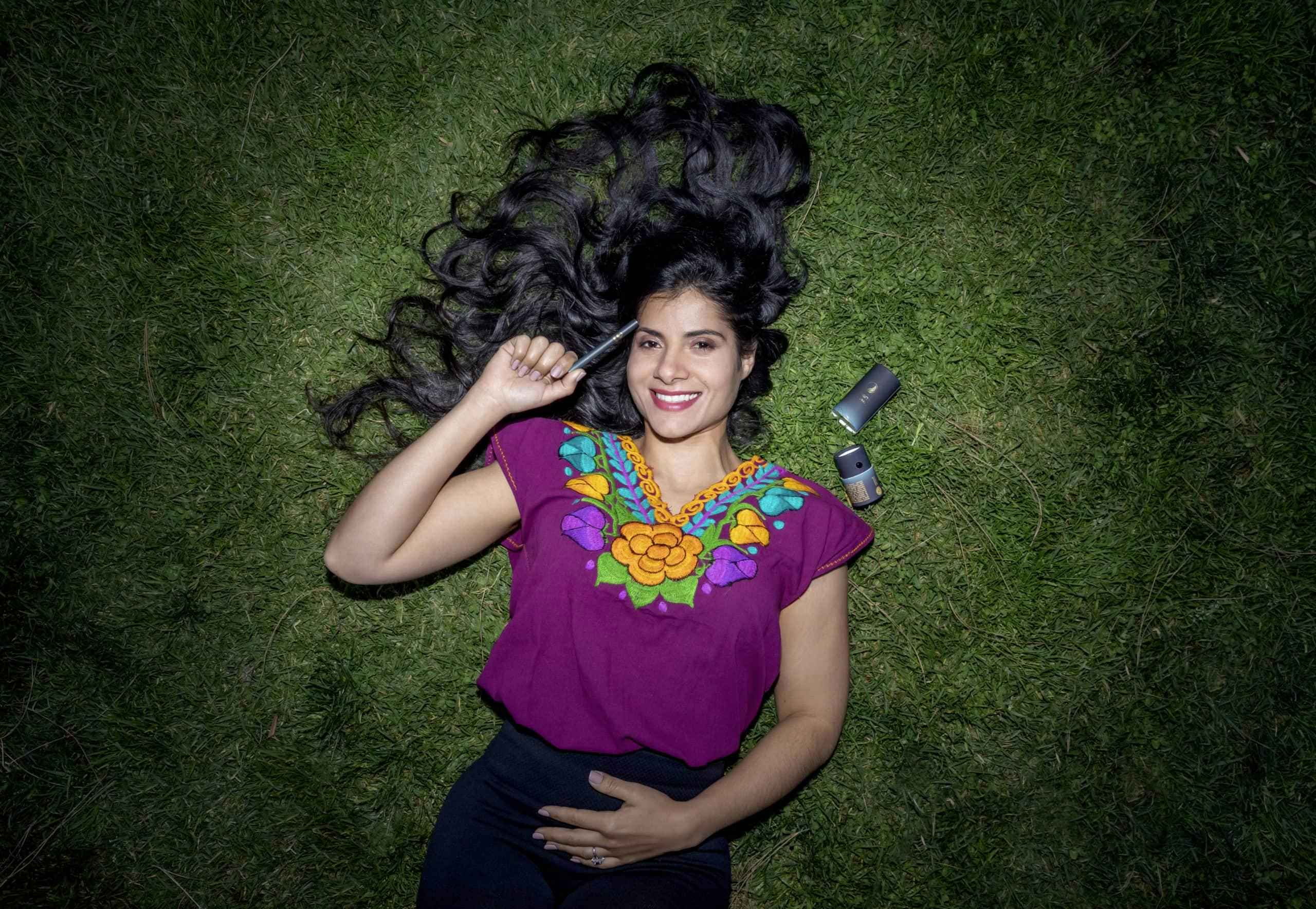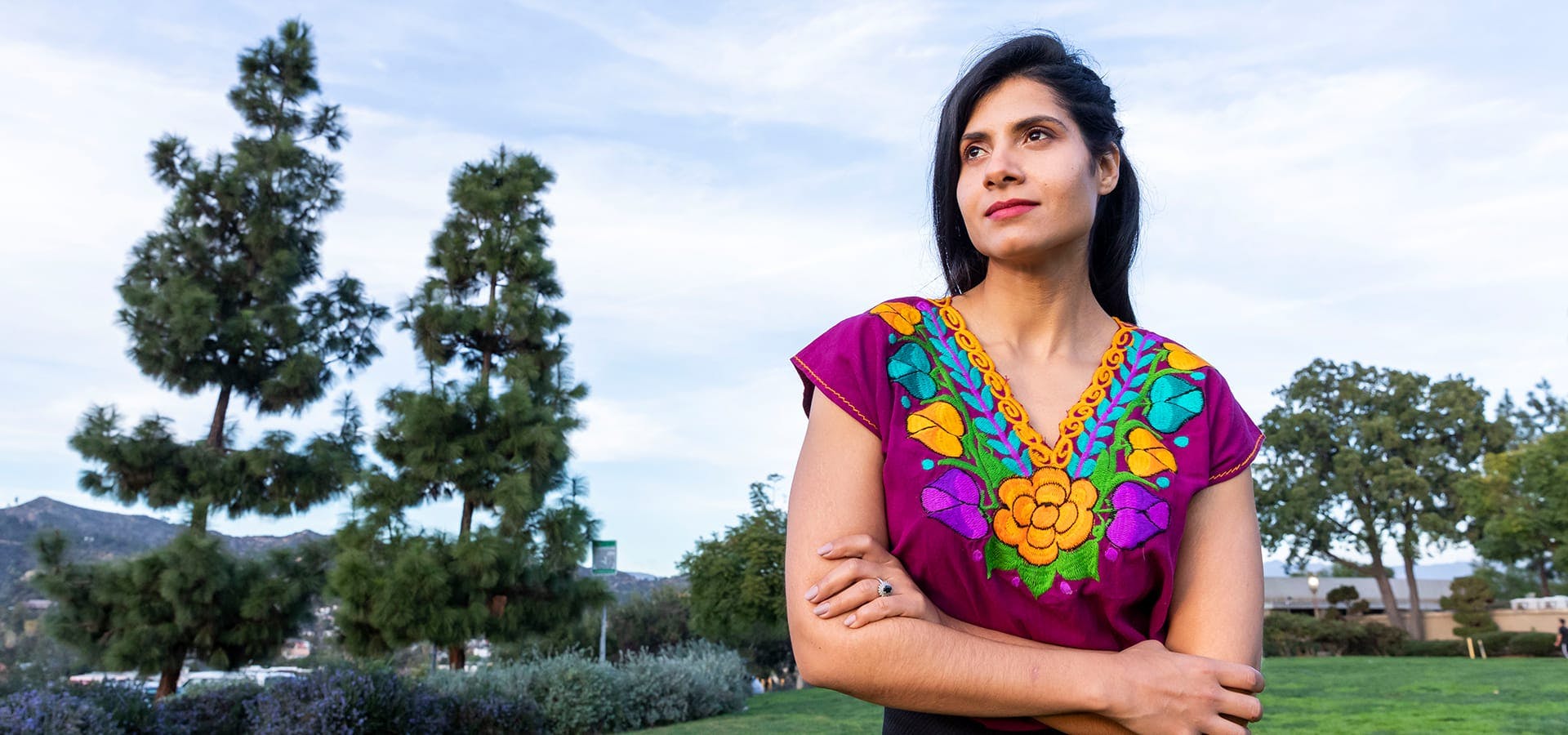“Smoke at 10 p.m., fall asleep, wake up at 1 a.m., smoke again, fall asleep, wake up at 4 a.m., smoke again, and fall asleep,” she remembers. “I also used to swim and weight train, and I noticed about three weeks after I started smoking that I couldn’t go 25 feet without breathing incorrectly. I had to stop.”
Originally from Guadalajara—where she received her BS in Chemistry Pharmacobiology and a degree in Industrial Chemistry before moving to Southern California—Vazquez Mitchell began to study sleep science in hopes of finding a solution. At the same time, she was becoming increasingly frustrated by her analytical, research-driven path at USC. In 2016, she left the program with a Master’s degree in Chemistry and parlayed her knowledge of organic synthesis, reactions, and extractions into a consulting firm, KitChem, specializing in food science. During the weekends Vazquez Mitchell would frequent local farmers markets, where she began to meet people who were experimenting with cannabis-infused foods. Wanting to grow her portfolio and lend a hand to people who shared her passion for innovation, she offered pro bono service, but despite her numerous certifications, publications, and a track record of bringing products to market for brands like Gatorade, Pepsi and Taco Bell, she continued to encounter skepticism.
“I learned the hard way,” she remembers. “I’m Mexican, I’m an immigrant, I have a strong accent, I’m young and I’m a woman. I learned that I had to step up and be very confident, know exactly what I was doing, and do it right from the beginning.”
For Vazquez Mitchell, cannabis represented a wide-open lane of opportunity, where deep pockets intersected with creative minds eager to bring new product to market. In early 2018, she signed on as chief scientist and R&D director at popular cannabis edibles company Kushy Punch. Later that year, she was named an “Outstanding Woman in Cannabis” by Dope Magazine.

“When I see food, I see food science,” she says. “If you see gelatin, I see a hydrogel. If you see vinaigrette, I see an emulsion. If you see coffee, I see an alkaloid. Cannabis was the combination of another science into food science. For me it was more intellectual, more challenging, and had more space for innovation. I could make something that actually has a pharmacological effect on your body, and there was so much space to get a better job through cannabis science.”
Her work at Kushy Punch, which included development of the first sugar-free cannabis gummy on the market, helped propel the company to even greater heights, but a restless mind is rarely satisfied. After two years, Vazquez Mitchell left and founded her own Ciencia Labs and became cofounder of the Institute of Food Technologists’ Cannabis Edibles Division. She also refocused her efforts on a remedy for her insomnia.
“I tried hundreds of vapes, everything marked ‘sleep’,” says Vazquez Mitchell, whose father was also afflicted with crippling insomnia. “My body was my enemy. My brain wanted to fall asleep, but my body wouldn’t let me.”
She began to explore various terpenes and delved into scientific papers on aromatherapy. She played with various ratios of TCH to CBD and created homemade vapes powered by bespoke strains. The fruit of her labor—a product that, in a way, had been years in the making—was dreamt.
The science behind the dreamt pen is a domino effect of reactions that not only help you fall asleep, but stay asleep. First, a 2.5:1 ratio of THC to CBD helps disorient and detach your brain from making all those logical connections that keep you awake and staring at the ceiling. Yes you “get high,” but the CBD is there to balance out any anxiety-inducing vibes. Cannabinoids, however, have a very immediate and short effect on your body. That’s where the valerian root and melatonin come in. Once the initial highs have worn off, the slower and more complex reactions created by the root begin to manifest, and since inhaled melatonin doesn’t need to be processed through the liver, its effects are much more predictable and immediate. Finally, terpenes, which give cannabis and other herbs, fruits and plants their fragrant aroma, are added. (Linalool, for example, is also found in lavender and rosewood, and promotes calming, anti-anxiety effects.) The proprietary blend has already been turning heads in the industry, taking home the ‘Best Product’ award at WEEDCon 2020 in Los Angeles. “My most difficult client was myself,” she says.
When it comes to women impacting the marketplace, the cannabis industry has afforded plenty of equal opportunity, although the laboratories continue to be a bit of a boy’s club. But that doesn’t bother Vazquez Mitchell. A few years ago, she organized a symposium on cannabis science where she was one of 10 speakers. All of them were executives, most of the C-suite variety, and none of them were younger than 40. Vazquez Mitchell, at the time, was 32 … and the only woman.
“When I was 18 I asked my father what did he want me to be,” she remembers. His response was terse but affectionate. “‘I don’t know. I don’t care,’ he said. ‘I just know that you’re going to be successful.’”










